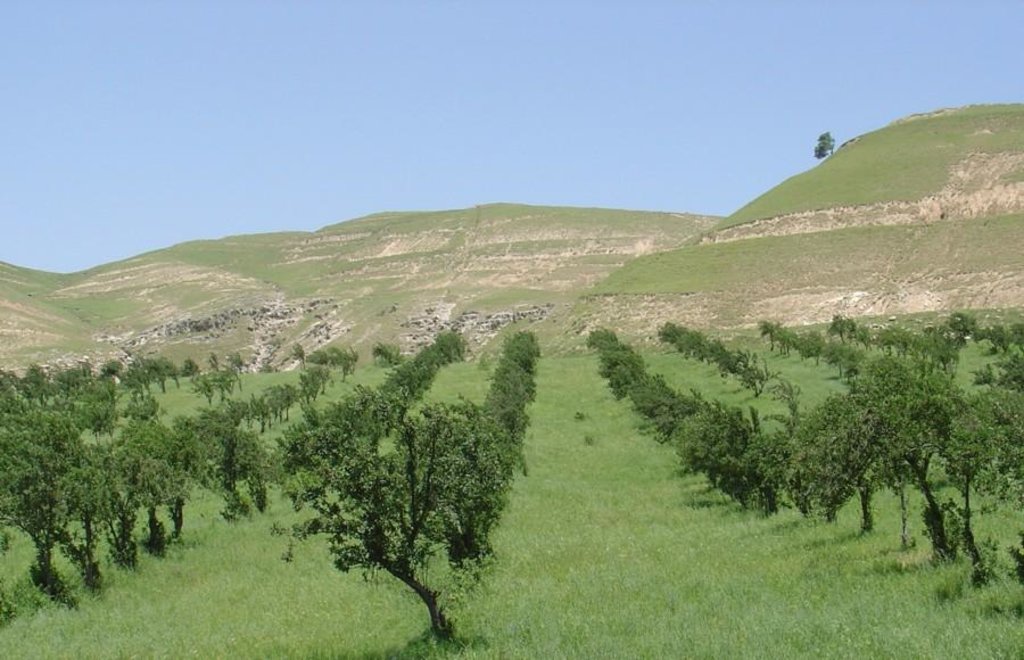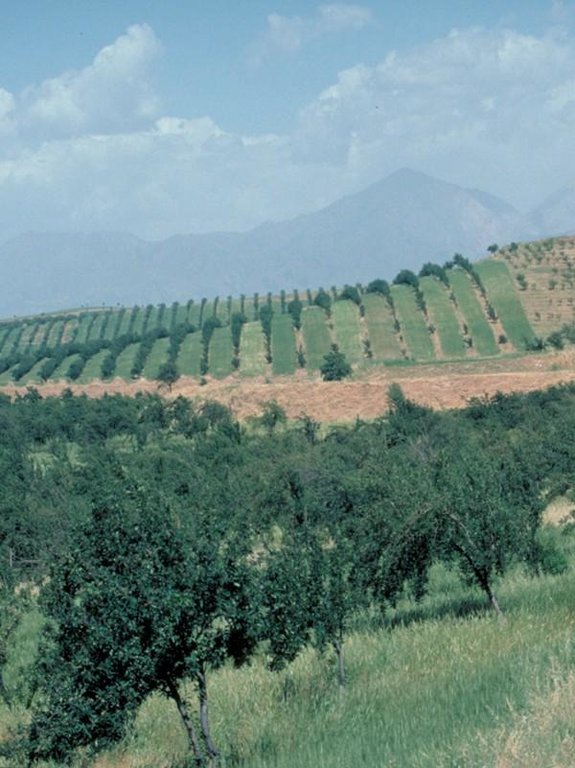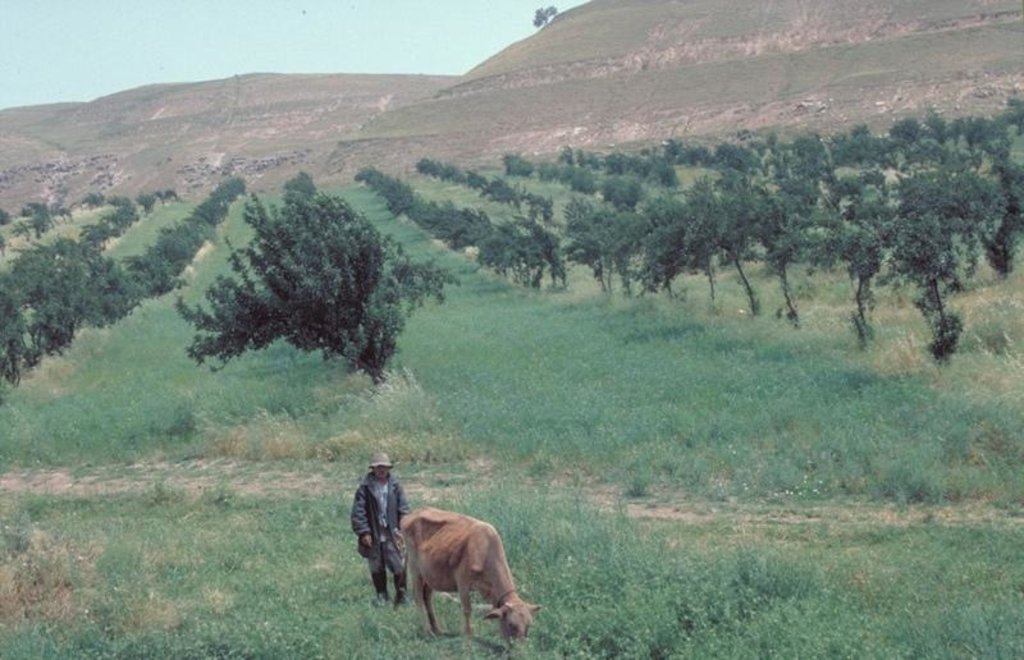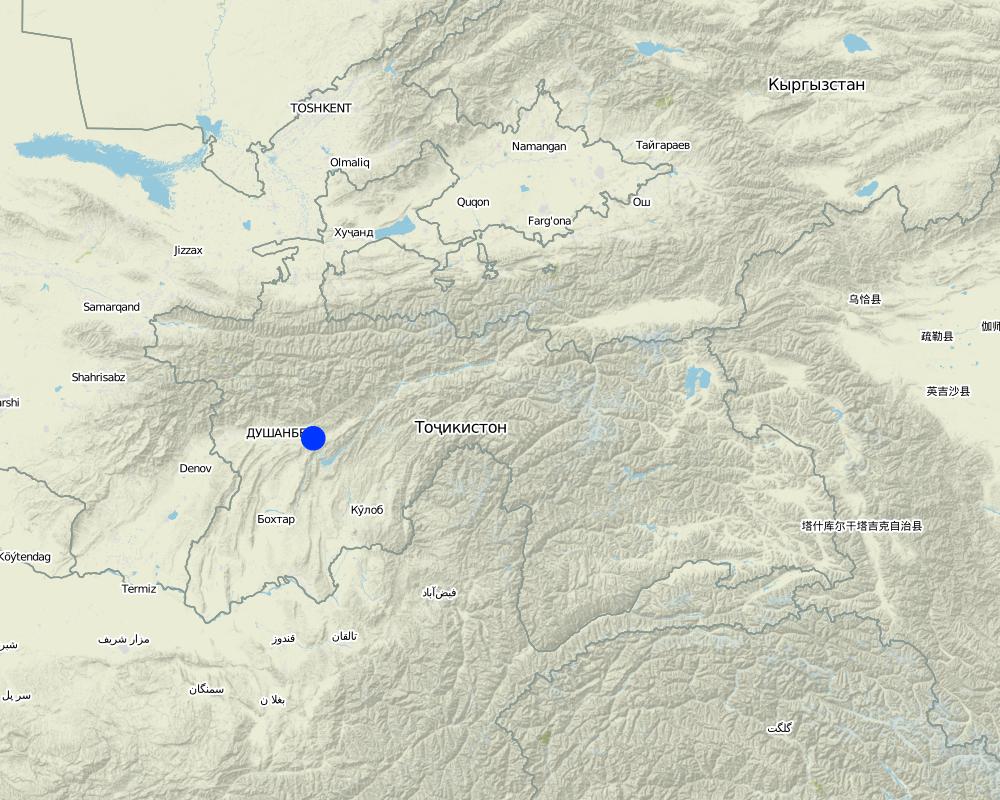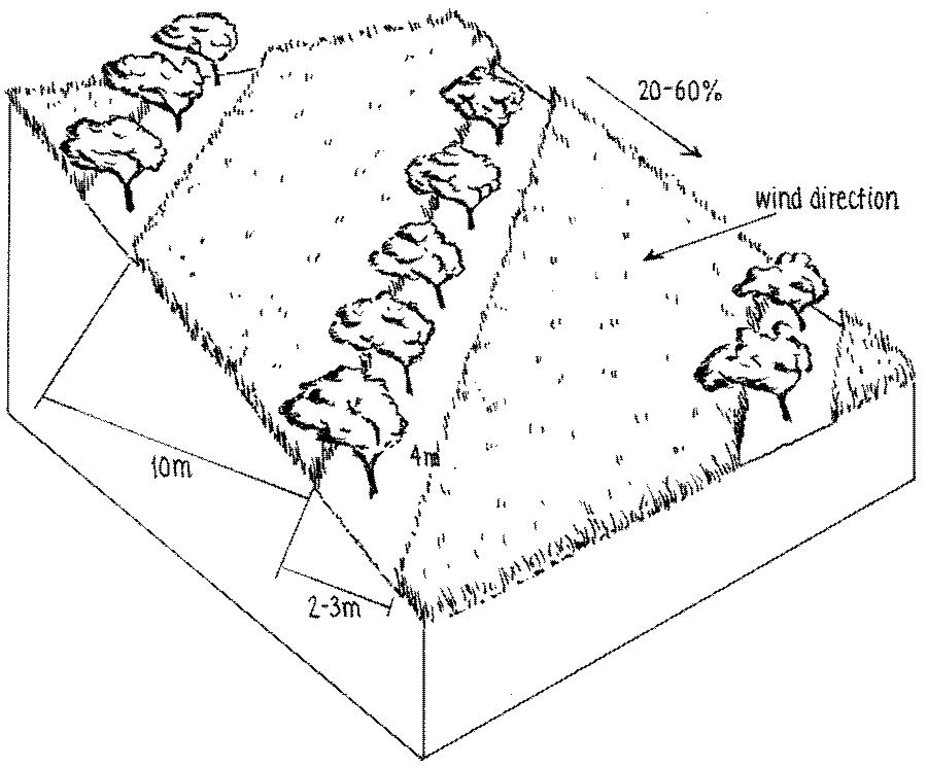Orchard-based agroforestry [Tajikistan]
- Creation:
- Update:
- Compiler: Loes Masselink
- Editor: –
- Reviewers: Laura Ebneter, Olga Andreeva, Lisa Soloveva, David Streiff, Alexandra Gavilano, Deborah Niggli
technologies_1017 - Tajikistan
- Full summary as PDF
- Full summary as PDF for print
- Full summary in the browser
- Full summary (unformatted)
- Orchard-based agroforestry: Aug. 14, 2019 (inactive)
- Orchard-based agroforestry: Nov. 2, 2021 (public)
- Orchard-based agroforestry: April 4, 2018 (inactive)
- Orchard-based agroforestry: Julie 19, 2017 (inactive)
- Orchard-based agroforestry: Julie 17, 2017 (inactive)
- Orchard-based agroforestry: Julie 17, 2017 (inactive)
- Orchard-based agroforestry: Julie 17, 2017 (inactive)
- Orchard-based agroforestry: Maart 9, 2017 (inactive)
View sections
Expand all Collapse all1. General information
1.2 Contact details of resource persons and institutions involved in the assessment and documentation of the Technology
SLM specialist:
Name of project which facilitated the documentation/ evaluation of the Technology (if relevant)
Book project: where the land is greener - Case Studies and Analysis of Soil and Water Conservation Initiatives Worldwide (where the land is greener)Name of the institution(s) which facilitated the documentation/ evaluation of the Technology (if relevant)
CDE Centre for Development and Environment (CDE Centre for Development and Environment) - SwitzerlandName of the institution(s) which facilitated the documentation/ evaluation of the Technology (if relevant)
Soil Science Institute (Soil Science Institute) - Tajikistan1.3 Conditions regarding the use of data documented through WOCAT
The compiler and key resource person(s) accept the conditions regarding the use of data documented through WOCAT:
Ja
1.5 Reference to Questionnaire(s) on SLM Approaches (documented using WOCAT)
2. Description of the SLM Technology
2.1 Short description of the Technology
Definition of the Technology:
An agroforestry system where legumes and cereals are planted in fruit orchards, giving simultaneous production and conservation benefits.
2.2 Detailed description of the Technology
Description:
In the Faizabad region, Tajikistan, an area which is characterised by hilly topography, and deep but highly erodible loess soils, farmers traditionally cultivate beans and wheat in combination with fruit trees. This was a rather unsystematic agroforestry system, and during Soviet times (in the 1980s) fruit production was intensified. Pure-stand orchards were established: the land was levelled and on slopes exceeding 20%, terraces were constructed mechanically. The density of trees was increased, and the little space remaining between was used for hay production. Annual cropping was stopped.
Purpose of the Technology: After the Soviet era, farmers reduced the number of trees, allowing room for inter-cropping. They also established new orchards according to this same pattern. Those who farm rented land merely inter crop wheat, whereas the few farmers who own their land, rotate crops with two years of wheat, followed by one of legumes (beans or lucern). Crops are grown both for home consumption and sale.
Establishment / maintenance activities and inputs: The density of apples was reduced by expanding the spacing from approx 5 m to 10 m between rows, and from 2 m to 4 m within rows. Along each row of trees a 2-3 m strip of grass was left to grow. The layout of fruit trees in lines is a compromise between being along the contour, and against the prevailing wind. After harvesting of the fruit, between August and October, farmers sow their annual crops.
Natural / human environment: This agroforestry system provides protection against strong winds, heavy rains and flooding. Soil erosion (by water) has been reduced due to improved soil cover by the inter cropping, and through leaf litter, which is left to decompose on the ground. Furthermore, after harvesting, about three quarters of the crop residues are left on the field as mulch. The remainder is used as fodder. Soil organic matter within the current agroforestry system is considerably higher than in the surrounding grazing areas. Soil fertility has improved also: beans can fix 60-80 kg/ha/year of nitrogen. Compared with other crops, wheat provides the best erosion protection. Since the lateral rooting system of the apple trees reaches only 1-1.5 m from the trunk, competition for nutrients is not a major problem. Neither is there a problem with shade, since during the crop establishment period the trees have lose their leaves. In order to increase production, farmers plan to apply supplementary irrigation where possible.
2.3 Photos of the Technology
2.5 Country/ region/ locations where the Technology has been applied and which are covered by this assessment
Country:
Tajikistan
Region/ State/ Province:
Tajikistan, Faizabad
Further specification of location:
Faizabad
Comments:
Total area covered by the SLM Technology is 45 km2.
Map
×2.6 Date of implementation
If precise year is not known, indicate approximate date:
- 10-50 years ago
2.7 Introduction of the Technology
Specify how the Technology was introduced:
- through land users' innovation
3. Classification of the SLM Technology
3.1 Main purpose(s) of the Technology
- reduce, prevent, restore land degradation
3.2 Current land use type(s) where the Technology is applied
Land use mixed within the same land unit:
Ja
Specify mixed land use (crops/ grazing/ trees):
- Agroforestry

Cropland
- Annual cropping
- Tree and shrub cropping
Annual cropping - Specify crops:
- legumes and pulses - beans
- cereals - wheat (spring)
- lucerne
Tree and shrub cropping - Specify crops:
- pome fruits (apples, pears, quinces, etc.)
Comments:
Major land use problems (compiler’s opinion): Most of the rains fall in late autumn and early spring, and the rains coincide with very strong winds. The topsoil is therefore exposed to erosion during this period if left uncovered, and without a windbreak. A particular problem during the soviet period was that the intensive orchard system meant annual food crops were left out of the production system: soil cover was reduced and there was less food.
Type of cropping system and major crops comments: two years of wheat followed by one of legumes (beans or lucerne)
3.4 Water supply
Water supply for the land on which the Technology is applied:
- rainfed
3.5 SLM group to which the Technology belongs
- agroforestry
- windbreak/ shelterbelt
- improved ground/ vegetation cover
3.6 SLM measures comprising the Technology

agronomic measures
- A2: Organic matter/ soil fertility
- A7: Others

vegetative measures
- V1: Tree and shrub cover
- V2: Grasses and perennial herbaceous plants

structural measures
- S1: Terraces
Comments:
Main measures: agronomic measures, vegetative measures, structural measures
Type of agronomic measures: mulching, rotations / fallows
Type of vegetative measures: aligned: -against wind
3.7 Main types of land degradation addressed by the Technology

soil erosion by water
- Wt: loss of topsoil/ surface erosion
- Wg: gully erosion/ gullying

soil erosion by wind
- Et: loss of topsoil

chemical soil deterioration
- Cn: fertility decline and reduced organic matter content (not caused by erosion)
Comments:
Main type of degradation addressed: Wt: loss of topsoil / surface erosion, Wg: gully erosion / gullying, Et: loss of topsoil, Cn: fertility decline and reduced organic matter content
Main causes of degradation: other human induced causes (specify) (The suplementary irrigation system could not be maintained after state farms stopped recieving government support. Thus, it became more interesting to increase crop production through intercropping.)
Secondary causes of degradation: governance / institutional (With the transformation of the planned economy to a market economy, for the state farm areas new forms of management had to be found.)
3.8 Prevention, reduction, or restoration of land degradation
Specify the goal of the Technology with regard to land degradation:
- prevent land degradation
Comments:
Main goals: prevention of land degradation
4. Technical specifications, implementation activities, inputs, and costs
4.1 Technical drawing of the Technology
Technical specifications (related to technical drawing):
Fruit trees intercropped with wheat (or beans): note the fruit trees are aligned in a 'compromise' position between the direction of the prevailing wind and the slope.
Location: Faizabad. Faizabad, Tajikistan
Date: 25-07-2004
Technical knowledge required for field staff / advisors: moderate
Technical knowledge required for land users: moderate
Main technical functions: improvement of ground cover, increase in nutrient availability (supply, recycling,…), reduction in wind speed, improvement of soil fertility (with crop rotation incl. Beans+lucerne)
Secondary technical functions: control of concentrated runoff: retain / trap, reduction of slope angle, improvement of subsoil structure (hardpan), water harvesting / increase water supply, retain/trap concentrated runoff (prevention of gully erosion)
Mulching
Material/ species: leaf litter, crop residues
Rotations / fallows
Material/ species: wheat, legumes
Aligned: -against wind
Vegetative material: T : trees / shrubs, G : grass
Vertical interval between rows / strips / blocks (m): 2-6
Spacing between rows / strips / blocks (m): 10
Vertical interval within rows / strips / blocks (m): 4
Width within rows / strips / blocks (m): 2-3
Slope (which determines the spacing indicated above): 20-60%
terrace: forward sloping: earth
Author:
Mats Gurtner, Centre for Development and Environment (CDE), University of Bern
4.2 General information regarding the calculation of inputs and costs
Specify currency used for cost calculations:
- USD
4.3 Establishment activities
| Activity | Timing (season) | |
|---|---|---|
| 1. | Planting of fruit orchard | |
| 2. | Thinning: doubling the spacing between trees (by farmers, after Soviet period) | |
| 3. | Hand planting of fruit tree seedlings | |
| 4. | planting fruit trees | |
| 5. | 1. Levelling of steep land into terraces with graders | |
| 6. | Planting of fruit orchards |
4.4 Costs and inputs needed for establishment
| Specify input | Unit | Quantity | Costs per Unit | Total costs per input | % of costs borne by land users | |
|---|---|---|---|---|---|---|
| Labour | Planting of fruit orchard | ha | 1.0 | 60.0 | 60.0 | 100.0 |
| Labour | Thinning and hand lanting | ha | 2.0 | 10.0 | 20.0 | 100.0 |
| Equipment | machine use | ha | 1.0 | 120.0 | 120.0 | 100.0 |
| Equipment | tools | 1.0 | 10.0 | 10.0 | 100.0 | |
| Plant material | seedlings | ha | 1.0 | 250.0 | 250.0 | |
| Fertilizers and biocides | fertilizer | ha | 1.0 | 50.0 | 50.0 | 100.0 |
| Fertilizers and biocides | biocides | ha | 1.0 | 30.0 | 30.0 | 100.0 |
| Fertilizers and biocides | pesticides | ha | 1.0 | 30.0 | 30.0 | 100.0 |
| Total costs for establishment of the Technology | 570.0 | |||||
| Total costs for establishment of the Technology in USD | 570.0 | |||||
4.5 Maintenance/ recurrent activities
| Activity | Timing/ frequency | |
|---|---|---|
| 1. | Applying organic manure for crops and trees | (November to March) |
| 2. | Ploughing to depth of 25–30 cm for annual crops | (November to March) |
| 3. | Disc ploughing and harrowing . | (March) |
| 4. | Chemical fertiliser application to crops | (once during season). |
| 5. | Pest management with chemicals | (two-three times where possible/affordable) |
| 6. | harvesting: wheat is the only crop, which can be harverted if tractor and petrol is available | |
| 7. | mulching trees (humus cover) | |
| 8. | cutting trees |
4.6 Costs and inputs needed for maintenance/ recurrent activities (per year)
| Specify input | Unit | Quantity | Costs per Unit | Total costs per input | % of costs borne by land users | |
|---|---|---|---|---|---|---|
| Labour | applying organic manure for crops and trees | ha | 1.0 | 45.0 | 45.0 | 100.0 |
| Labour | ploughing | ha | 2.0 | 10.0 | 20.0 | 100.0 |
| Equipment | labour animal traction | ha | 1.0 | 10.0 | 10.0 | 100.0 |
| Equipment | labour harvesting | ha | 1.0 | 100.0 | ||
| Equipment | labour mulching and cutting | ha | 1.0 | 50.0 | 50.0 | 100.0 |
| Plant material | seeds | ha | 1.0 | 30.0 | 30.0 | 100.0 |
| Fertilizers and biocides | fertilizer | ha | 1.0 | 50.0 | 50.0 | 100.0 |
| Fertilizers and biocides | biocides | ha | 1.0 | 5.0 | 5.0 | 100.0 |
| Fertilizers and biocides | compost manure | ha | 1.0 | 10.0 | 10.0 | 100.0 |
| Total costs for maintenance of the Technology | 220.0 | |||||
| Total costs for maintenance of the Technology in USD | 220.0 | |||||
Comments:
Cost calculation refers to farmers who established new agroforestry plots (without receiving any incentives). These are farmers who have rented land from state farms. However, conversion of Soviet orchards is more common than the establishment of new agroforestry plots (information on costs not available).
5. Natural and human environment
5.1 Climate
Annual rainfall
- < 250 mm
- 251-500 mm
- 501-750 mm
- 751-1,000 mm
- 1,001-1,500 mm
- 1,501-2,000 mm
- 2,001-3,000 mm
- 3,001-4,000 mm
- > 4,000 mm
Agro-climatic zone
- semi-arid
Thermal climate class: temperate
5.2 Topography
Slopes on average:
- flat (0-2%)
- gentle (3-5%)
- moderate (6-10%)
- rolling (11-15%)
- hilly (16-30%)
- steep (31-60%)
- very steep (>60%)
Landforms:
- plateau/plains
- ridges
- mountain slopes
- hill slopes
- footslopes
- valley floors
Altitudinal zone:
- 0-100 m a.s.l.
- 101-500 m a.s.l.
- 501-1,000 m a.s.l.
- 1,001-1,500 m a.s.l.
- 1,501-2,000 m a.s.l.
- 2,001-2,500 m a.s.l.
- 2,501-3,000 m a.s.l.
- 3,001-4,000 m a.s.l.
- > 4,000 m a.s.l.
Indicate if the Technology is specifically applied in:
- not relevant
Comments and further specifications on topography:
Landforms also mountain slopes.
5.3 Soils
Soil depth on average:
- very shallow (0-20 cm)
- shallow (21-50 cm)
- moderately deep (51-80 cm)
- deep (81-120 cm)
- very deep (> 120 cm)
Soil texture (topsoil):
- medium (loamy, silty)
Topsoil organic matter:
- low (<1%)
If available, attach full soil description or specify the available information, e.g. soil type, soil PH/ acidity, Cation Exchange Capacity, nitrogen, salinity etc.
Soil fertility: low
Soil drainage / infiltration: good
Soil water storage capacity: medium
5.4 Water availability and quality
Ground water table:
< 5 m
Availability of surface water:
poor/ none
Water quality (untreated):
good drinking water
5.5 Biodiversity
Species diversity:
- high
5.6 Characteristics of land users applying the Technology
Market orientation of production system:
- mixed (subsistence/ commercial)
Off-farm income:
- > 50% of all income
Level of mechanization:
- manual work
- mechanized/ motorized
Indicate other relevant characteristics of the land users:
Off-farm income specification: trade and business; young men often migrate to Russia (seasonally or for several years) to search for jobs
Level of mechanization manual work: pruning of trees, harvesting, applying herbizids
Level of mechanization animal traction: ploughing if no fuel for tractors is available
Level of mechanization mechanized/motorized: Disc ploughing and harrowing, if petrol is available
5.7 Average area of land used by land users applying the Technology
- < 0.5 ha
- 0.5-1 ha
- 1-2 ha
- 2-5 ha
- 5-15 ha
- 15-50 ha
- 50-100 ha
- 100-500 ha
- 500-1,000 ha
- 1,000-10,000 ha
- > 10,000 ha
Is this considered small-, medium- or large-scale (referring to local context)?
- small-scale
Comments:
Average area of land owned or leased by land users applying the Technology also 2-5 ha
5.8 Land ownership, land use rights, and water use rights
Land ownership:
- state
Land use rights:
- leased
5.9 Access to services and infrastructure
health:
- poor
- moderate
- good
education:
- poor
- moderate
- good
technical assistance:
- poor
- moderate
- good
energy:
- poor
- moderate
- good
roads and transport:
- poor
- moderate
- good
6. Impacts and concluding statements
6.1 On-site impacts the Technology has shown
Socio-economic impacts
Production
crop production
fodder production
wood production
Income and costs
farm income
Other socio-economic impacts
trees hinder farm operations
Comments/ specify:
difficult to apply pesticides using machinery and pesticides are very expensive.
Pruning is important, but farmers are new to the system and don’t always have the skills required
Socio-cultural impacts
community institutions
conflict mitigation
Ecological impacts
Water cycle/ runoff
excess water drainage
Soil
soil moisture
soil cover
soil loss
soil organic matter/ below ground C
Climate and disaster risk reduction
wind velocity
Other ecological impacts
nutrient use efficiency
water use efficiency
soil fertility
Comments/ specify:
Also biodiversity enhancement is medium (20-50%)
6.2 Off-site impacts the Technology has shown
reliable and stable stream flows in dry season
downstream flooding
downstream siltation
groundwater/ river pollution
wind transported sediments
6.4 Cost-benefit analysis
How do the benefits compare with the establishment costs (from land users’ perspective)?
Short-term returns:
positive
Long-term returns:
very positive
How do the benefits compare with the maintenance/ recurrent costs (from land users' perspective)?
Short-term returns:
very positive
Long-term returns:
very positive
6.5 Adoption of the Technology
- 11-50%
If available, quantify (no. of households and/ or area covered):
3500 land user families have adopted the Technology without any external material support in an area of 45 km^2
Of all those who have adopted the Technology, how many did so spontaneously, i.e. without receiving any material incentives/ payments?
- 91-100%
Comments:
3500 land user families have adopted the Technology without any external material support
There is a strong trend towards spontaneous adoption of the Technology
Comments on adoption trend: Adoption rate is high: 3,500 households in the region, who rented the orchards, have converted them themselvs without any incentives.
6.7 Strengths/ advantages/ opportunities of the Technology
| Strengths/ advantages/ opportunities in the compiler’s or other key resource person’s view |
|---|
|
Easy to convert orchards How can they be sustained / enhanced? Land reform from state to private ownership would assist the process and strengthen farmers' associations. |
| Helps provide employment (mainly self- employment, partial employment of additional labourers) and increased self-sufficiency. With the cultivation of wheat, some farmers can solve their food problems and do not need an off-farm income. |
|
Improvement of soil fertility and soil organic matter content How can they be sustained / enhanced? Use all the crop residue and leaves of trees as cover (mulch). |
|
Considerable reduction of soil erosion How can they be sustained / enhanced? Adopt cover crop and rotate with other legumes and minimum tillage system. |
|
Wider spacing between the rows of trees (to 10 m) is best for the agroforestry How can they be sustained / enhanced? Remaining orchards with the original Soviet spacing of 5m between the rows should be thinned. |
6.8 Weaknesses/ disadvantages/ risks of the Technology and ways of overcoming them
| Weaknesses/ disadvantages/ risks in the compiler’s or other key resource person’s view | How can they be overcome? |
|---|---|
| The irrigation system established during Soviet times required high maintenance inputs due to siltation of the canals. During the period of the civil war systems ceased to function, the canals filled up with sediments and finally overflowed during rain storms causing gully formation | Control of water flow within the orchard using cutoff drains and drainage ditches. |
| Lines of trees which are planted up and down the slope to provide wind. | Compromise in layout design (see description). |
| Orchards managed by state farms are often not well looked after. | Leasing of land and awarding landholder certificates leads to improved orchard management. |
7. References and links
7.1 Methods/ sources of information
7.3 Links to relevant online information
Title/ description:
Loes Masselink. 2012. Monitoring SLM Practices in Tajikistan. BSc thesis, Land Degradation and Development Group, International Land and Water Management at Wageningen University. The Netherlands.
URL:
https://www.wocat.net/fileadmin/user_upload/documents/Theses/Masselink2012.pdf
Links and modules
Expand all Collapse allLinks
No links
Modules
No modules



